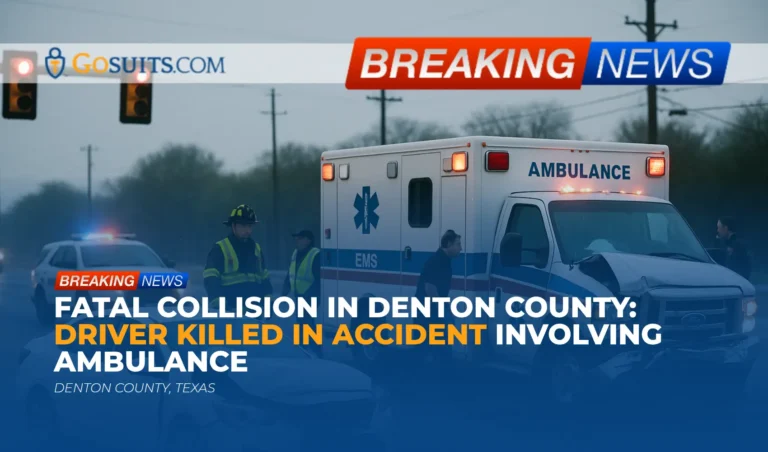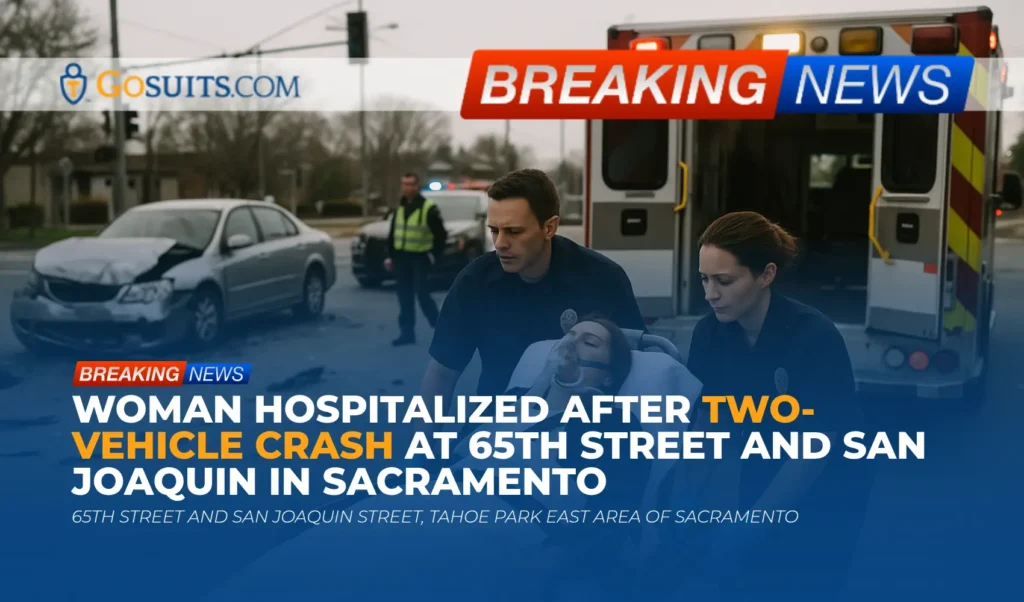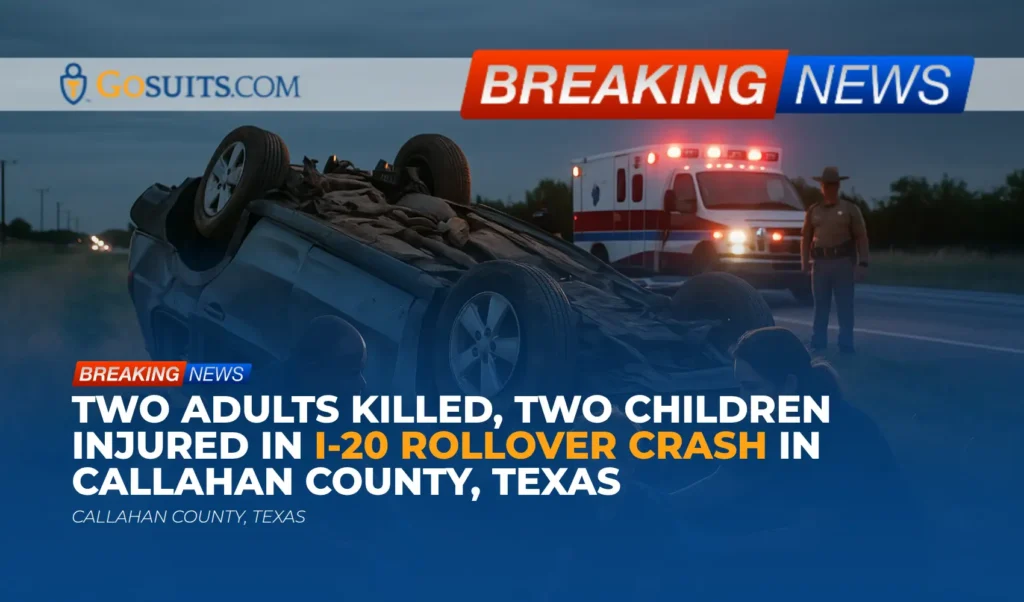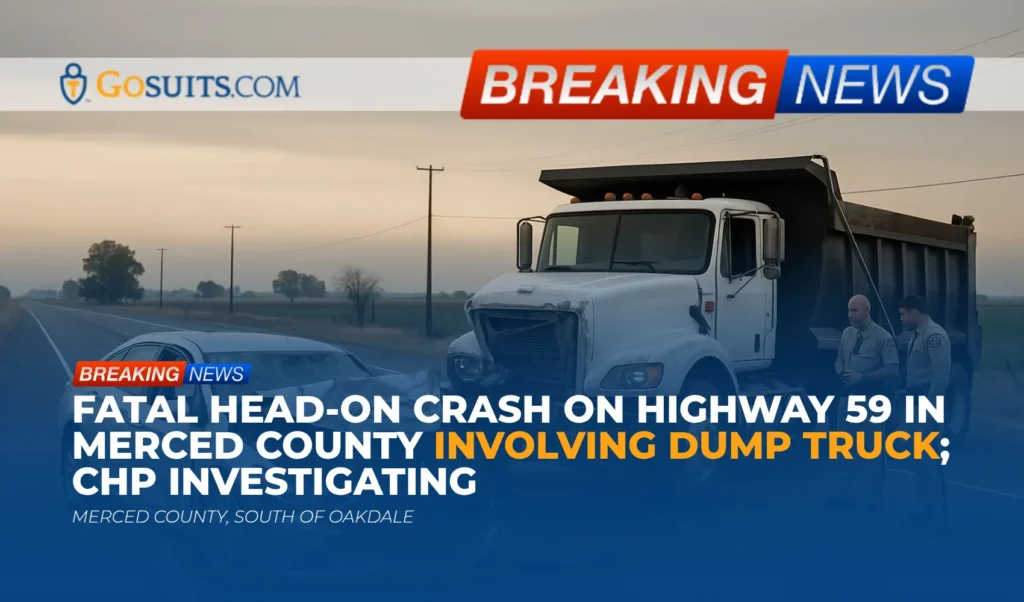A fatal collision in Denton County, Texas, has left one person dead and two others injured. The incident occurred on Wednesday morning at the intersection of Fishtrap Road and Farm-to-Market Road 424, involving an Aubrey Fire Department ambulance and another vehicle.
Incident Details
According to reports from the Aubrey Fire Department, the ambulance was responding to an emergency call on U.S. Highway 377. The ambulance was operating with its lights and siren activated at the time of the collision. The circumstances surrounding the crash are currently under investigation by an outside police agency, with support from the Texas Department of Public Safety.
Fire officials have stated that the paramedics involved in the crash were unharmed and immediately rendered aid to the occupants of the other vehicle. The driver of the vehicle sustained critical injuries and was transported to a local hospital, where they later died. Two passengers in the vehicle were also injured and hospitalized; however, their injuries are not believed to be life-threatening.
Community Response
In a news release, city officials expressed their condolences, stating, “Our thoughts are with the family and loved ones affected by this heartbreaking loss. We are deeply saddened by this tragedy and extend our heartfelt condolences during this incredibly difficult time.”
The incident has prompted an outpouring of concern and grief within the community, highlighting the risks faced by first responders and the potential for severe consequences when emergency vehicles are involved in collisions.
Legal Implications of Accidents Involving Emergency Vehicles
Accidents involving emergency vehicles, such as ambulances, present complex legal challenges. While emergency vehicles are permitted to operate with lights and sirens to expedite their response to emergencies, they are not exempt from traffic laws. Determining liability in these cases requires a thorough investigation of the circumstances leading up to the collision.
Several factors are typically considered in these investigations, including:
- Emergency Vehicle Operation: Was the ambulance operating with its lights and sirens activated, as required by law? Were the lights and sirens clearly visible and audible to other drivers?
- Right-of-Way: Did the ambulance have the right-of-way at the intersection? Emergency vehicles are generally granted the right-of-way when responding to emergencies, but this right is not absolute. They must still exercise due care for the safety of others on the road.
- Driver Negligence: Was the driver of the other vehicle negligent in any way, such as by failing to yield the right-of-way or by being distracted while driving?
- Intersection Safety: Was the intersection properly designed and maintained to ensure the safety of all road users? Were there any visibility obstructions or other factors that may have contributed to the collision?
- Policies and Procedures: Were the policies and procedures of the Aubrey Fire Department and the State of Texas followed? Did these procedures meet industry best practices?
Determining Liability and Seeking Compensation
In the aftermath of a collision involving an emergency vehicle, it is essential to determine who was at fault to pursue appropriate legal action. Depending on the circumstances, liability may rest with the ambulance driver, the driver of the other vehicle, or even a third party, such as a government entity responsible for road maintenance or design.
Individuals injured in such accidents, or the families of those who are killed, may be entitled to compensation for their losses. This compensation can cover a range of damages, including:
- Medical expenses
- Lost wages
- Pain and suffering
- Funeral and burial costs (in cases of wrongful death)

The Importance of an Independent Investigation
Given the complexities involved in these cases, conducting an independent investigation is crucial. This investigation may involve:
- Reviewing police reports and other official documents
- Interviewing witnesses
- Examining the accident scene
- Consulting with accident reconstruction experts
An independent investigation can help to establish the facts of the case and determine the extent of liability, ensuring that all responsible parties are held accountable.
Understanding Legal Rights
Navigating the legal aftermath of an accident involving an emergency vehicle can be overwhelming. It is important for those affected to understand their rights and options. This includes:
- The right to seek compensation for injuries and losses
- The right to pursue legal action against negligent parties
- The right to a fair and impartial investigation of the accident
Safety Considerations
This tragic incident serves as a reminder of the importance of road safety and the need for drivers to exercise caution when encountering emergency vehicles. Here are some safety tips to keep in mind:
- Yield the Right-of-Way: When you see or hear an ambulance (or other emergency vehicle) approaching with its lights and sirens activated, safely pull over to the side of the road and stop.
- Check Intersections: Be especially cautious when approaching intersections, as emergency vehicles may be approaching from any direction.
- Avoid Distractions: Focus on driving and avoid distractions, such as cell phones or other electronic devices.
- Stay Aware: Be aware of your surroundings and anticipate potential hazards.
By following these safety tips, drivers can help to reduce the risk of accidents involving emergency vehicles and protect themselves and others on the road.

Commentary from Gosuits Denton County, Texas Personal Injury Attorney
Collisions involving emergency vehicles are a stark reminder of the delicate balance between the urgent need for emergency services and the safety of all road users. These incidents often involve intricate legal and factual issues that require a detailed investigation to ascertain the cause and liability. While emergency vehicles have the right-of-way when responding to emergencies, they are also required to operate with due regard for the safety of others. This means that emergency responders must use their lights and sirens, and they must proceed through intersections cautiously.
In cases like the one in Denton County, it is essential to conduct a thorough examination of all contributing factors. This includes assessing the actions of the ambulance crew, the other driver, and any potential road design or maintenance issues that may have played a role. The investigation will seek to determine if all applicable traffic laws and safety protocols were followed. Establishing negligence in these cases requires a comprehensive understanding of both the legal standards and the specific circumstances of the accident.
For individuals and families impacted by such tragedies, understanding their legal rights is paramount. They may have the right to seek compensation for medical expenses, lost income, pain and suffering, and other damages. Consulting with a personal injury attorney who is skilled in handling complex vehicle accident cases can be crucial in navigating the legal process and ensuring that their rights are protected. The aim is to provide support and legal guidance during this difficult time, and to assist them in pursuing the compensation they deserve.






